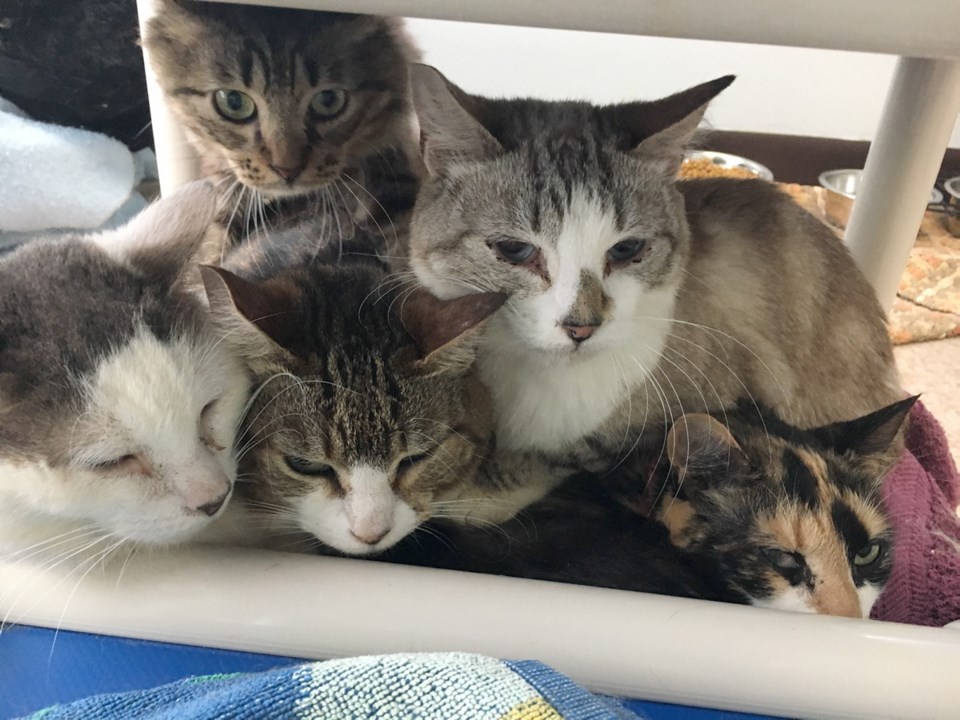‘Let me-owt.” “You just came in.” “Let me-owt.”
We were looking after a friend’s cat. The grey shorthair made the most of its position as beloved household feline. Out, in, out, in, food, tummy rub, out, in, hair over everything, out, in, out, in, play with toys, out. Oh, and in, again.
My friend had assured us that Miss Mew is self-sufficient. She said the cat sleeps most of the time. She said the cat is very low maintenance.
When we arrived at my friend’s townhouse after dropping her off at the airport, we found five pages of instructions attached to the fridge door.
Miss Mew has fleas, so please comb her daily. Miss Mew loves the expensive kitty-crack food in the cupboard — please mix small quantities with the rank-smelling, healthy dry food in the bin. Miss Mew eats only the tuna-flavoured variety of tinned cat food. Miss Mew has a thyroid problem, so needs a pill every 12 hours. We could use the tatty, cat-clawed mat in the storeroom to straitjacket and force-feed the cat. Miss Mew prefers drinking the water from the toilet bowl in the front bathroom, so that’s off limits, if you please, for other business. We can use the loo in the basement.
“Remind me why we agreed to do this,” Nature Boy said, as we read the list.
“Well, I thought it was so I could get some cat time,” I said. “But it appears we’re doing it to give [name deleted to protect the guilty] a desperately needed holiday.”
“You realize I’ll be the one trying to restrain and force feed the cat its pills?”
“On the plus side,” I pointed out, “our time here should eliminate any urge on our part to get a cat of our own.”
“You realize I’ll be the one scooping the litter?”
“And I’ll be the one dry-heaving as I dish out stinky cat food.”
At which point, Miss Mew interrupted. “Let me-owt.”
Five minutes later, “Let me in.”
Five minutes later, “Let me-owt.”
We soon concluded Miss Mew is miss-named. As a result of his litter-box experiences, Nature Boy started calling it Piss Pee-yew, then settled on Piss Poo. Both are appropriately gender-neutral names for a cat that has just one X chromosome, yet no longer has the hardware to show otherwise.
Despite the maintenance issues, the cat formerly known as Miss Mew has a home where she/he/it is cared for. My friend may be slightly cat-crazy, but she’s crazy for just one cat — not like the dozens in a cat-hoarding case reported by the local SPCA last fall.
Nor is Miss Mew/Piss Poo living on the streets. Strays face many challenges, including disease, uncertain food, inadequate shelter, and becoming lunch for raccoons, owls and other predators. They also threaten birds and other wildlife, and spread disease.
According to a recent Canadian Federation of Humane Societies report, in 2016, about 9.3 million cats in Canada were owned by people. The total number of cats, owned and otherwise, in any region is hard to determine, as feral cats tend to avoid humans. Estimates are further confounded by cats’ changing status — they might be owned and cared-for one day, abandoned or lost the next, and officially or unofficially adopted shortly after. About 60 per cent of cats that came into Canadian animal shelters in 2016 were adopted.
Estimates suggest between 10 million and 120 million free-ranging and feral cats live in Canada and the U.S., in addition to approximately 10 million owned cats in Canada.
To get a better handle on numbers, researchers from the University of Guelph recently developed a tool that more accurately estimates owned cats, unowned or stray cats, and cats in the shelter system in urban areas — and accounts for overall cat-population changes.
The tool is designed to help communities address cat welfare and better manage outdoor and stray cats. Using city-specific information, it can help communities direct spending to shelters or public education, while identifying appropriate interventions and when and where to apply them.
But if Miss Moo/Piss Poo should ever stray, all our friend need do is shake a box of kitty-crack at the back door and call its name. Miss Mew/Piss Poo will come running.
